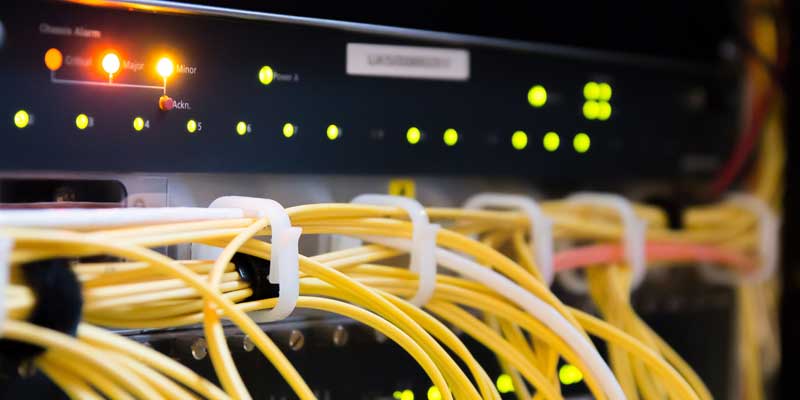SEI provide a dedicated service for the installation, termination and testing of all data cables including optical fibre networks for our clients. Some of the benefits of Fibre are listed below.
Faster Speeds.
Fibre optic cables have a core that carries light to transmit data. This allows them to carry signals at speeds that are only about 30 percent slower than the speed of light, much faster than copper cables. There is also less signal degradation with fibre cables. If your business depends on efficient handling of high quantities of data, such as financial transactions, large backups or multimedia content, upgrading your core network to fibre optic technology can dramatically increase the speed and efficiency of your day-to-day operations, with far less maintenance and additional equipment than traditional copper infrastructure.
Longer Distances.
Fibre optic cable installations can carry signals much further than copper cables, although the actual distance depends on the type of cable, the wavelength and the network. In some cases, you can send data up to 40 kilometres without any degradation.
Greater Bandwidth.
Traditional copper cables were originally designed for voice transmission and have a limited bandwidth. Fibre optic cables provide more bandwidth, allowing them to carry more data than copper cables of the same diameter. Single-mode fibre delivers up to twice the throughput of multi-mode fibre.
More Reliable.
Fibre cables are immune to temperature changes, weather conditions and moisture, all of which can hamper the connectivity of copper cables. In addition, fibre does not carry electric current, so it is not affected by electromagnetic interference that can interrupt data transmission, and it does not present a fire hazard, which worn copper cables can.
More Durable.
Compared to copper cables, fibre optic cables are thinner and lighter in weight, can withstand more pull pressure and are less prone to damage and breakage.
Lower Total Cost of Ownership.
Although fibre optic cables may have a higher initial cost than copper, the durability and reliability of fibre can make the total cost of ownership lower. In addition, fibre optic installations are cheaper to maintain, more durable and require less hardware.



